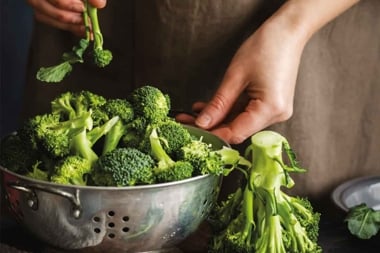
Soy is the Jekyll and Hyde of the plant world. With reported health benefits often contradicted by accounts of negative facts, what are the pros and cons of soy?
Soy is the Jekyll and Hyde of the plant world. With reported benefi ts often contradicted by accounts of negative effects, confusion about soy’s true nature abounds. This month we explore the many faces of soy–the good, the bad, and the unknown.
All soy products are made from soybeans. Whole soy products such as tofu, soymilk, soy fl our, tempeh, miso, and soy protein provide the most benefi cial phytochemicals, fi bre, vitamins, and minerals. The phytochemicals in soy, principally the isofl avones, are believed to provide the most protective properties.
Soy and Cardiovascular Health
In 1999 the US Food & Drug Administration (FDA) determined that daily soy consumption, as part of a healthy diet and lifestyle, could lower cholesterol levels. In 2006, however, researchers with the American Heart Association (AHA) and the Harvard School of Public Health challenged this widely accepted view. They reported that studies completed since the 1999 FDA ruling did not support the original results and did not show a protective benefi t from soy, either generally or specifi cally from soy-based isofl avone supplements. Nevertheless, the AHA advises heart patients that while soy may not lower cholesterol directly, it is a quality protein alternative to meat, poultry, and other animal-based products, providing the full complement of amino acids without saturated fats.
Soy and Cancer
Hundreds of studies have examined soy and its effect on cancer, especially breast cancer. Soy’s isofl avones act like estrogens, also known as phytoestrogens. Research into these compounds has produced confl icting results. One study reported that low concentrations of genistein, perhaps the most studied soy isofl avone, stimulated the growth of breast cancer cells in a way similar to estrogen, but that high concentrations of genistein inhibited estrogen-positive receptor cells.
The medical community views this weak estrogenic effect with concern, especially for women with breast cancer. According to Daniel Sheehan, director of the Estrogen Knowledge Base Program at the FDA’s National Center for Toxicological Research, “While isofl avones may have benefi cial effects at some ages or circumstances, this cannot be assumed to be true at all ages. Isofl avones are like other estrogens in that they are two-edged swords, conferring both benefi ts and risks.”
Soy and Menopause
Generally, studies on soy’s ability to relieve menopausal symptoms have produced disappointing results. Research teams in 2001 and 2006 concluded that soy could not be shown to relieve menopausal symptoms. A recent Mayo Clinic study supports these fi ndings, demonstrating that soy consumption reduced neither the frequency nor severity of hot fl ashes.
Soy and Osteoporosis
Unlike the confusing results from breast cancer and heart disease studies, research has shown that soy can help prevent osteoporosis. A two-year comparison of postmenopausal women showed that those who consumed two glasses of soy milk daily had stable bone mass, while women who consumed no soy over the same period experienced signifi cant bone loss.
Proceed with Caution
The little soybean is a complex food that depending on its form and amount, can be benefi cial or potentially harmful. Soy’s phytoestrogens seem to possess both estrogenic and antiestrogenic behaviour. This action seems to be determined by each person’s level of endogenous estrogens as well as the number and type of estrogen receptors. To better grasp soy’s complexities, researchers are trying to understand the importance of the interactions across the entire isofl avone array.
For now, women with breast cancer or cancers of the reproductive organs are advised to consume only moderate amounts of whole soy foods and to avoid supplements entirely. As for the rest of us, soy can continue to be part of a balanced diet in support of a healthy lifestyle.




